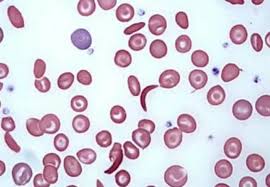Sickle cell disease, an inherited blood disorder, increases vulnerability to strokes, which occur when a blood vessel in the brain bursts or becomes clogged. While doctors have made strides in treatment following a landmark 1998 clinical trial—introducing regular red blood cell transfusions to reduce stroke risk in high-risk children—new research suggests that these efforts may not be sufficient.
According to findings published on September 20 in the journal *Blood*, the risk of stroke doubles with every 20 years of age for individuals with sickle cell disease. The data indicates a 13-fold increase in brain-bleed stroke risk between the ages of 20 and 60, signaling that older adults with sickle cell face a particularly heightened risk.
Stroke Incidence Peaks in Recent Decades
The study, which analyzed California emergency room and hospital data from over 7,600 patients with SCD, also revealed that nearly 10% of these patients experienced a stroke in subsequent years. Despite initial success following the 1998 trial, where stroke rates saw a two-year decline, the highest overall stroke rates were recorded in the 2010s.
"Even in children, who likely receive the most comprehensive care for sickle cell disease in the U.S., these trends are the opposite of what we would hope for," stated Dr. Ted Wun, senior researcher and associate dean for clinical and translational research at the University of California, Davis School of Medicine.
Gaps in Care Contribute to Higher Stroke Risk
Researchers suggest that lapses in routine care may be contributing to the rising stroke rates. Specifically, many doctors may not be performing regular brain ultrasounds to assess stroke risk in sickle cell patients or may not be consistently administering blood transfusions. Hydroxyurea, a drug that reduces the formation of sickle-shaped blood cells, might also be underutilized.
Other stroke risk factors among sickle cell patients include high blood pressure, high cholesterol, and transient blood clots that temporarily block brain-supplying blood vessels.
The research underscores the need for heightened vigilance in addressing these risk factors, particularly in adult patients. "As hematologists, our training emphasizes the highest stroke risk in young children, but this has led to a lack of attention to adult patients," noted Wun.
Dr. Olubusola Oluwole, lead researcher and assistant professor at the University of Pittsburgh, echoed this sentiment, stressing the importance of screening for common cardiovascular risk factors such as high cholesterol and blood pressure. "These findings highlight the need for better prevention strategies tailored to both pediatric and adult sickle cell populations."
As stroke rates continue to climb among people with sickle cell disease, this study points to significant gaps in care that need to be addressed, particularly for adult patients. More comprehensive screening and preventive measures may help curb the rising incidence of strokes, potentially saving lives and improving long-term outcomes for those living with SCD.
